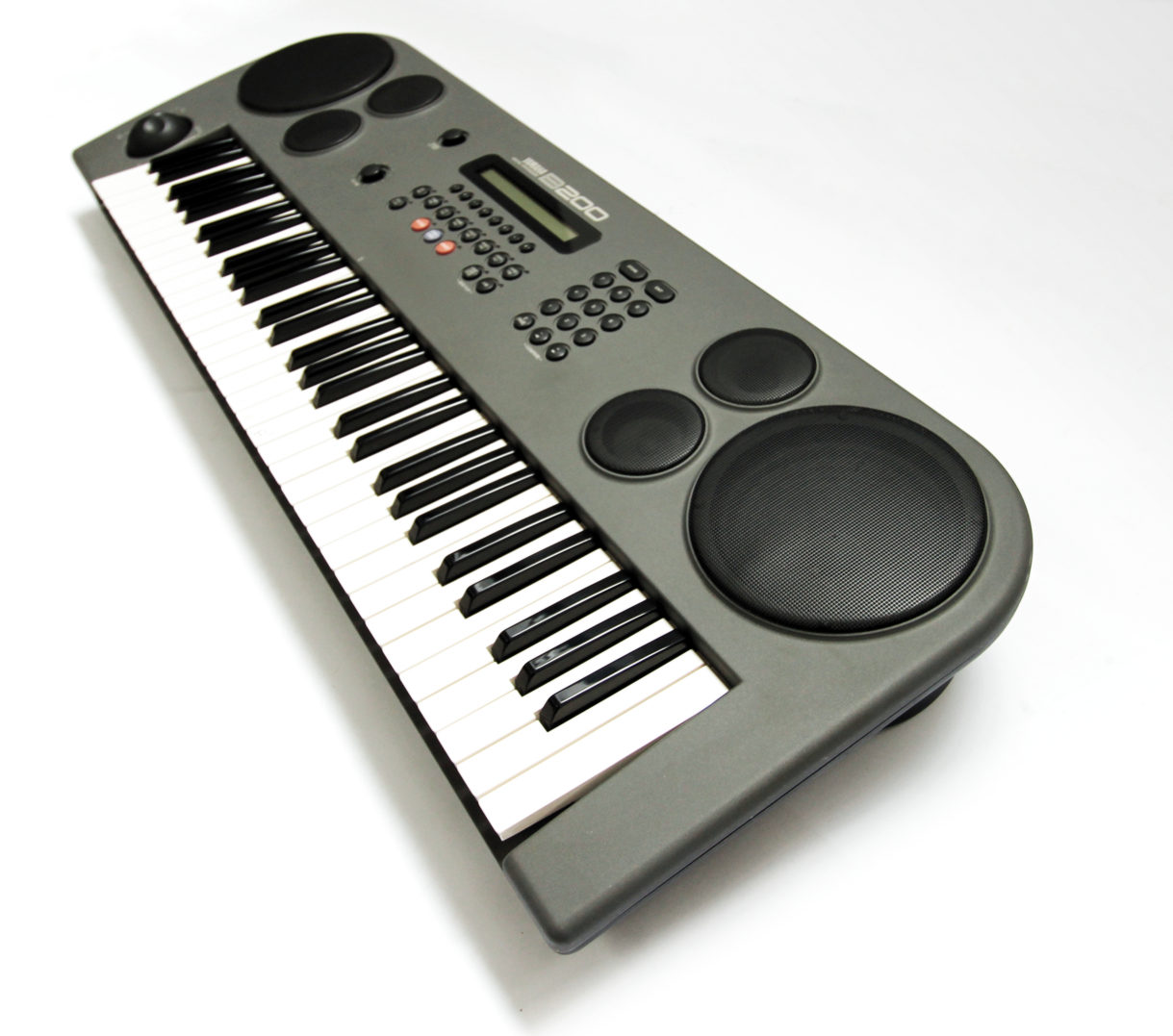WOLF retro DESIGN REVIEW. 5th July 2018
A retro review looks at products that are at least over ten years old from a present-day WOLF design perspective. While the technology and fashion of the period influence design, and are taken into consideration, great design ideas will transcend their eras to be timeless.
Interesting and factual information may be provided, but our review aims to deliver insight from the perspective of a designer’s mind and eyes.
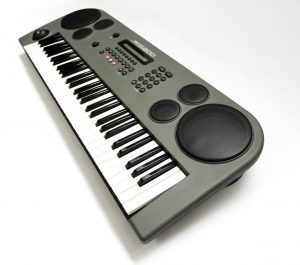
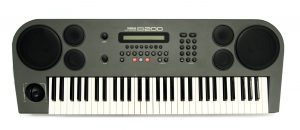 First impression/ Delight
First impression/ Delight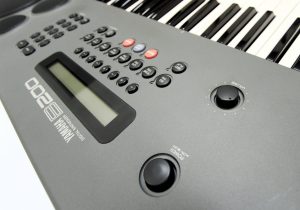 Exterior Design ReviewThe buttons on the face plate are neatly arranged with plenty of space. In our view there is possibly too much space to make the face plate feel rather bland or empty. They are sized and shaped a bit like Mentos. Their design is well considered with even a shadow line detail around them. The pitch and mod wheels on this version form two halves of a sphere, which looks interesting but can be a bit awkward to use. Thought was given to designing this unit to appear slimmer from the rear and sides. The sides cantilever out about an inch with two-tone effect. The top face of this unit has a textured flat grey paint while the bottom half is a more standard dark grey plastic finish. All corners a well rounded and the sides have subtle curves.
Exterior Design ReviewThe buttons on the face plate are neatly arranged with plenty of space. In our view there is possibly too much space to make the face plate feel rather bland or empty. They are sized and shaped a bit like Mentos. Their design is well considered with even a shadow line detail around them. The pitch and mod wheels on this version form two halves of a sphere, which looks interesting but can be a bit awkward to use. Thought was given to designing this unit to appear slimmer from the rear and sides. The sides cantilever out about an inch with two-tone effect. The top face of this unit has a textured flat grey paint while the bottom half is a more standard dark grey plastic finish. All corners a well rounded and the sides have subtle curves.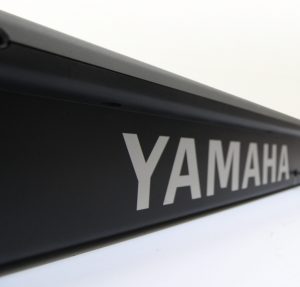
 Craftmanship.The textured surface paint does help to make this unit feel less plastic like than it really is. It’s durable but after 3 decades many will have scuffs, chips and scratches. It’s not built for live gigs and Yamaha would have known that anyways since this was not intended for that purpose but rather to look nice in a home studio. The buttons, keys, screen and modular wheels are all solid as standard with Yamaha to make this a machine built to last. You would just need to be careful not to stain or scratch the body as it’s a type of plastic and colour that would be very difficult to repair or touch up.
Craftmanship.The textured surface paint does help to make this unit feel less plastic like than it really is. It’s durable but after 3 decades many will have scuffs, chips and scratches. It’s not built for live gigs and Yamaha would have known that anyways since this was not intended for that purpose but rather to look nice in a home studio. The buttons, keys, screen and modular wheels are all solid as standard with Yamaha to make this a machine built to last. You would just need to be careful not to stain or scratch the body as it’s a type of plastic and colour that would be very difficult to repair or touch up.
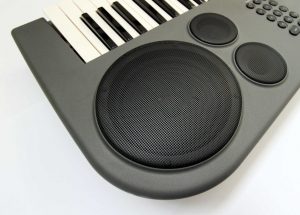
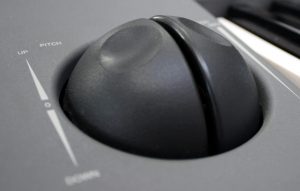
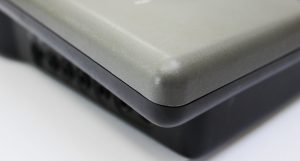
FUNCTION- Experience.
We found the buttons don’t feel nice to press. Despite their craftsmanship there just seems to be cheapness to the way they feel and click. With too much space on the face-plate we found that much of the initial anticipation from its unique design gets lost in the lack of controllers and “Things to do” on the front panel. The cantilevering ends feel nice to hold and make this unit easy to carry.
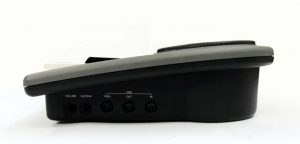
Desirability / Collectability
From a collectability perspective the B200 is confident in its position because it is the first in its range. It’s looks are unique but not necessarily pretty. Beautiful design however is not necessarily good design. When compared to all the subsequent B models we felt it had the best overall design balance. In our view the B200 was a brave design decision with good effort. The colour is probably a bit dull given that the shape was so radical for the time. We think Yamaha could have marketed this unit with multiple colour options or even artistic graphics splashed across all that empty space.
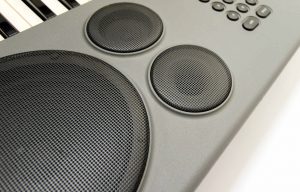
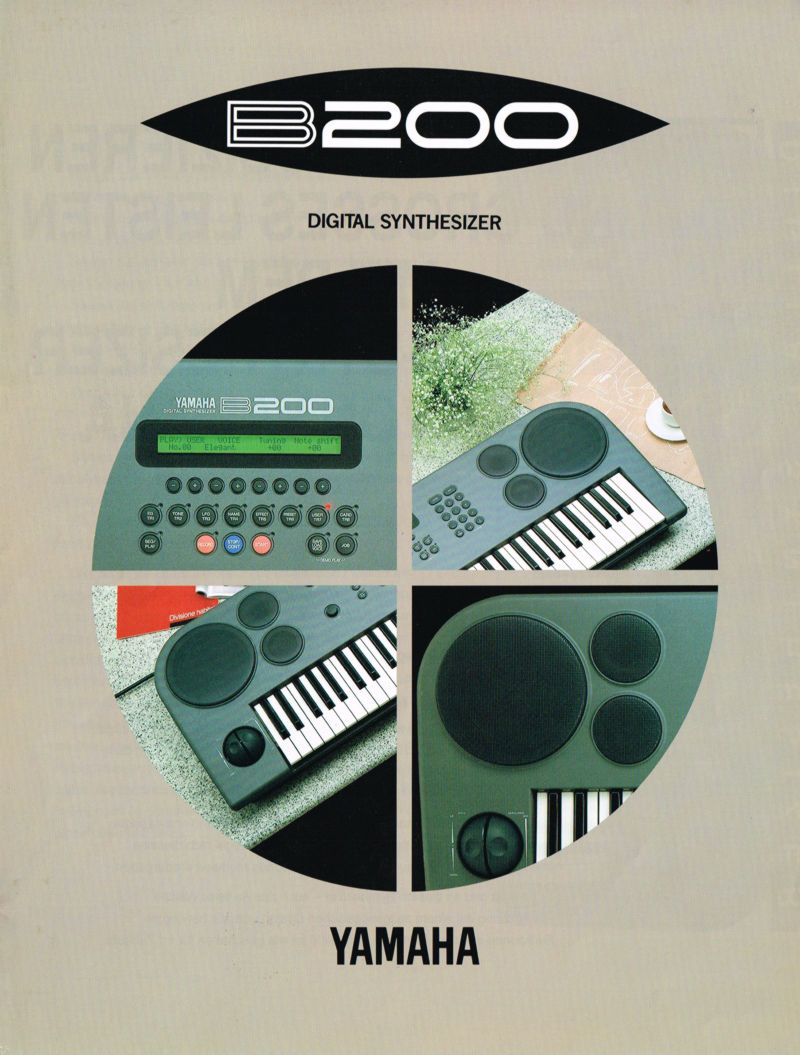
Original Brochure
WORD OF THE WOLF
It’s a cute and interesting synth from our design perspective but by todays standards it’s nothing to shout about. If you find a mint one for a bargain, it is still a great sounding machine to have with the convenience of built in speakers. It’s a simple and easy keyboard to play but you’ll find plenty of newer models able to do a whole lot more for similar dollars.
WOLF DESIGN EXCELLENCE SCORE = 6.3
Disclaimer
The information in this review is intended for informational or educational purposes to provide readers an understanding of how something may be seen from a certain design perspective. In this case it is from the view point of WOLF DESIGNS. As design is subjective this review should only be considered as an independent opinion. Information further to being of an opinion is provided to the best of our knowledge based on our own research at the time of doing the review. We cannot be held responsible for any inaccuracies or inconsistencies and reserve the right to change or update any content as appropriate.
The final responsibility of the design resides with the original manufacturer.

